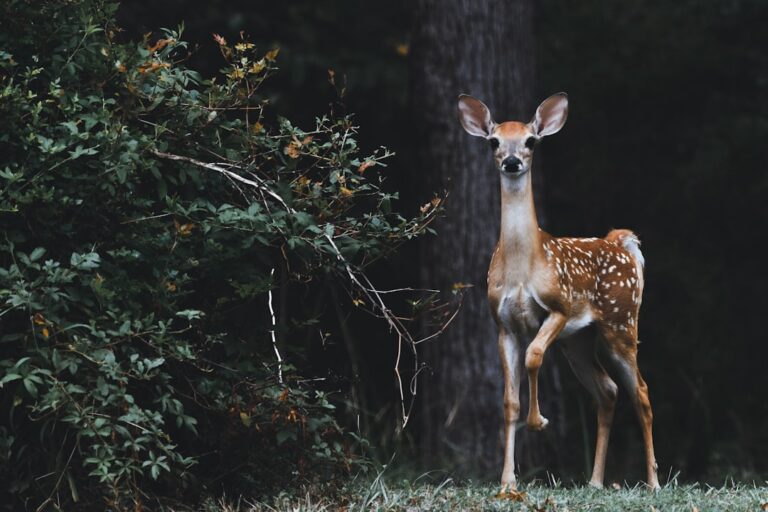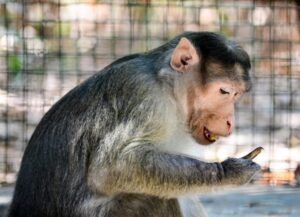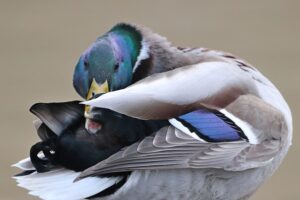Animal behavior is a fascinating field of study that encompasses the myriad ways in which animals interact with their environment, other organisms, and themselves. This discipline, often referred to as ethology, examines behaviors ranging from simple reflexes to complex social interactions. Understanding animal behavior is crucial not only for the study of individual species but also for the broader ecological systems in which they exist.
The behaviors exhibited by animals are influenced by a combination of genetic predispositions and environmental factors, leading to a rich tapestry of actions that can vary widely even within the same species. The study of animal behavior has evolved significantly over the years, moving from mere observation to a more scientific approach that incorporates experimental methods and theoretical frameworks. Early ethologists like Konrad Lorenz and Nikolaas Tinbergen laid the groundwork for understanding instinctual behaviors through their pioneering work with animals in natural settings.
Today, researchers utilize advanced technologies such as GPS tracking, video analysis, and even neurobiological techniques to gain deeper insights into the motivations behind animal actions. This multifaceted approach allows scientists to explore not only how animals behave but also why they behave in certain ways, providing a comprehensive understanding of the complexities of life in the animal kingdom.
Key Takeaways
- Animal behavior encompasses a wide range of activities and interactions within the animal kingdom.
- Communication and social behavior play crucial roles in the survival and success of many animal species.
- Foraging and feeding behavior are essential for obtaining necessary nutrients and energy for survival.
- Reproductive behavior and mating strategies vary greatly among different animal species and can have significant impacts on population dynamics.
- Territoriality and aggression are common behaviors in the animal kingdom and are often linked to competition for resources and mating opportunities.
- Migration and navigation are remarkable behaviors displayed by many animals, allowing them to travel vast distances and find their way in diverse environments.
- Learning and intelligence in animals can be observed through various problem-solving abilities and adaptive behaviors.
- Human impact on animal behavior can have detrimental effects, but conservation efforts aim to mitigate these impacts and protect animal populations.
Communication and Social Behavior in Animals
Communication is a fundamental aspect of animal behavior that facilitates interactions among individuals within a species. Animals employ a variety of methods to convey information, including vocalizations, body language, chemical signals, and visual displays. For instance, the intricate songs of birds serve not only to attract mates but also to establish territory and communicate with other members of their species.
The complexity of these vocalizations can vary significantly; some species, like the lyrebird, are known for their remarkable ability to mimic sounds from their environment, showcasing an advanced level of communication that can influence social dynamics. Social behavior is equally diverse and can be observed in various forms across the animal kingdom. Many species exhibit social structures that dictate interactions within groups, such as hierarchies seen in wolf packs or matriarchal societies in elephants.
These social systems often involve cooperative behaviors that enhance survival and reproductive success. For example, meerkats engage in cooperative breeding, where individuals take turns caring for the young while others stand guard against predators. Such behaviors highlight the importance of social bonds and communication in ensuring the well-being of the group, illustrating how interconnectedness can lead to greater resilience in the face of environmental challenges.
Foraging and Feeding Behavior

Foraging behavior is a critical aspect of animal survival, encompassing the strategies animals use to locate and acquire food. This behavior is influenced by various factors, including the availability of resources, competition with other species, and the energy costs associated with different foraging methods. Animals have evolved a range of foraging strategies tailored to their ecological niches.
For instance, some birds exhibit specialized feeding techniques; woodpeckers use their strong beaks to drill into trees to extract insects hidden beneath the bark, while hummingbirds have adapted long bills to access nectar from tubular flowers. The concept of optimal foraging theory provides a framework for understanding how animals maximize their energy intake while minimizing expenditure. According to this theory, animals will choose foraging strategies that yield the highest net energy gain.
For example, a study on bluegill sunfish revealed that these fish adjust their feeding behavior based on prey availability and size; they will selectively target larger prey when it is abundant, as it provides more energy relative to the effort required to capture it. This adaptability in foraging behavior underscores the dynamic relationship between animals and their environments, as they continuously assess and respond to changing conditions.
Reproductive Behavior and Mating Strategies
| Species | Mating Strategy | Reproductive Behavior |
|---|---|---|
| Humans | Monogamy, Polygamy | Pair bonding, courtship, copulation |
| Lions | Polygyny | Mating with multiple females, territorial behavior |
| Bonobos | Promiscuity | Sexual activity for social bonding, non-reproductive copulation |
| Penguins | Monogamy | Mating for life, shared parental care |
Reproductive behavior is a vital component of animal life that ensures the continuation of species. This aspect of behavior encompasses a wide range of activities related to mating, parental care, and offspring rearing. Mating strategies can vary significantly among species, influenced by ecological factors and social structures.
For example, in many bird species, males engage in elaborate courtship displays to attract females. The peacock’s extravagant tail feathers serve as a visual signal of fitness; females often choose mates based on these displays, which indicate genetic quality and health. Parental investment is another critical factor influencing reproductive success.
In some species, such as certain fish and amphibians, parents may provide little to no care after laying eggs. In contrast, mammals typically exhibit high levels of parental investment, with mothers often providing nourishment and protection for extended periods. The strategies employed by different species reflect adaptations to their environments; for instance, in species where offspring face high predation risks, increased parental care can enhance survival rates.
These diverse reproductive behaviors highlight the intricate balance between evolutionary pressures and ecological contexts that shape how animals reproduce.
Territoriality and Aggression in Animals
Territoriality is a common behavior observed in many animal species, serving as a mechanism for resource allocation and mate selection. Animals establish territories to secure access to food, shelter, and breeding opportunities while minimizing competition with others. The size and nature of these territories can vary widely depending on species and environmental conditions.
For example, male lions defend large territories that encompass multiple prides, ensuring access to mates while deterring rival males. In contrast, smaller animals like songbirds may establish much smaller territories that are fiercely defended against intruders. Aggression often accompanies territorial behavior as animals seek to assert dominance or defend their resources.
This aggression can manifest in various forms, from displays of strength to physical confrontations. In many cases, aggressive encounters are ritualized; for instance, deer engage in antler wrestling during mating season to establish dominance without causing serious injury. Such behaviors serve an important function in maintaining social order within populations while minimizing lethal conflicts.
Understanding territoriality and aggression provides insight into the evolutionary strategies animals employ to navigate their environments and secure their survival.
Migration and Navigation in the Animal Kingdom

Navigation During Migration
Navigation during migration is equally fascinating and complex. Many migratory species possess innate abilities that allow them to traverse vast distances with remarkable accuracy. Birds utilize a combination of environmental cues—such as the position of the sun or stars—as well as magnetic fields to orient themselves during their journeys.
Understanding Migration Mechanisms in the Era of Climate Change
Recent studies have revealed that some species may even rely on olfactory cues or visual landmarks to guide them along migratory routes. Understanding these navigation mechanisms not only sheds light on animal behavior but also raises questions about how environmental changes may impact migratory patterns in an era of climate change.
Learning and Intelligence in Animals
Learning is a crucial aspect of animal behavior that enables individuals to adapt to their environments based on experiences. Various forms of learning have been documented across species, ranging from simple habituation to complex problem-solving abilities. For instance, studies on octopuses have demonstrated their capacity for learning through observation; these cephalopods can mimic behaviors they observe in other individuals, showcasing a level of intelligence previously thought to be limited to vertebrates.
Cognitive abilities vary widely among species and can be influenced by ecological demands. Corvids—such as crows and ravens—are renowned for their problem-solving skills; they have been observed using tools to access food sources or even engaging in complex social interactions that require an understanding of others’ perspectives. Similarly, elephants exhibit remarkable memory capabilities; they can remember water sources over long periods and recognize individuals even after years apart.
These examples illustrate that intelligence in animals is not solely defined by brain size but rather by the ability to navigate challenges within their specific ecological contexts.
Human Impact on Animal Behavior and Conservation Efforts
Human activities have profoundly influenced animal behavior across the globe, often leading to significant changes in how species interact with their environments. Habitat destruction due to urbanization, agriculture, and deforestation has forced many animals to adapt their behaviors or face extinction. For example, urban-dwelling wildlife has been observed altering their feeding habits and social structures in response to human presence and resource availability.
Raccoons have become adept at scavenging human refuse, while some bird species have adjusted their nesting behaviors to thrive in urban settings. Conservation efforts aim to mitigate these impacts by protecting habitats and promoting sustainable practices that allow wildlife populations to thrive alongside human development. Initiatives such as wildlife corridors facilitate safe passage for animals across fragmented landscapes, enabling them to maintain migratory routes and access essential resources.
Additionally, public education campaigns raise awareness about the importance of biodiversity and encourage responsible behaviors that minimize human-wildlife conflict. By understanding the intricate relationships between human activities and animal behavior, conservationists can develop more effective strategies that promote coexistence and protect vulnerable species for future generations.












